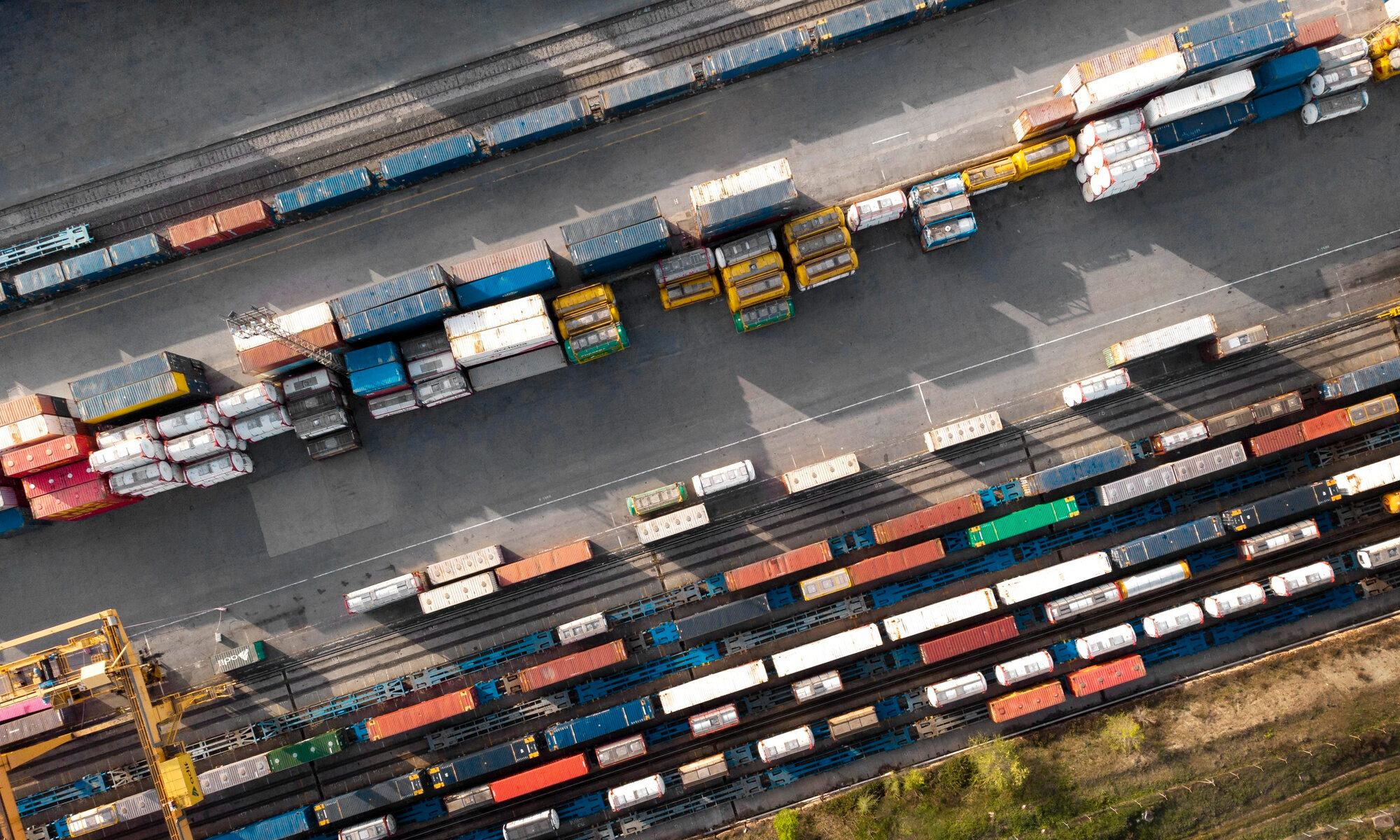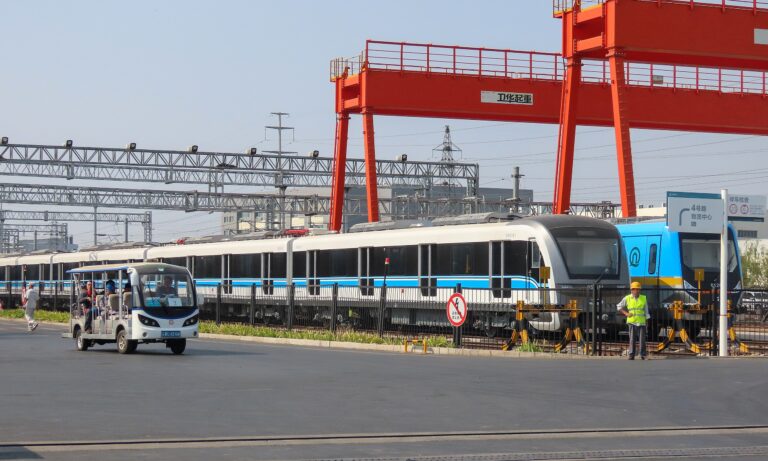The India-Middle East-Europe Corridor: Potential and Pitfalls

On the sidelines of this year’s G20 Summit, leaders from the US, India, Saudi Arabia, the United Arab Emirates, and the EU unveiled a new ambitious megaproject. With its two branches connecting India and Europe via the Middle East, the India-Middle East-Europe Economic Corridor (IMEC) can bring about a new era in cross-regional connectivity and economic integration. From the EU’s perspective, the project goes well with its Global Gateway initiative and its desire to regain some of the Union’s waning international influence.
This article is part of a series of articles authored by young, aspiring China scholars under the Future CHOICE initiative.
The IMEC project was launched on September 9, 2023, and will be comprised of an eastern corridor, connecting India to the Arabian Gulf, and a western corridor, acting as a bridge between the Arabian Gulf and Europe. The core focus of the initiative will lie in the construction of a network of railways and ports with the purpose of improving efficiency, lowering the costs of and the time needed for transportation of goods and services, and creating new employment opportunities. If the co-signatories manage to successfully get it off the ground, the corridor is likely to hold both a notable economic and strategic significance as well as the ability to reshape global connectivity and challenge China’s international influence.
The European Commission president Ursula von der Leyen hailed the IMEC as a “historic breakthrough.” However, while participating countries all have a deep interest in bringing the project to life, their underlying motivation differs significantly. Washington and the EU will have to carefully navigate and confront member countries’ diverging perceptions of and attitudes towards the current geopolitical landscape and the increasingly multipolar world order.
Aligned Interests, Different Motivations
For the US and the EU, IMEC represents an opportunity to counter and contain Beijing’s presence in the Middle East. China has become an important actor in the region, particularly from the economic perspective, with its Belt and Road Initiative (BRI) gaining noticeable traction among regional powers. This has, however, raised concerns, especially among US policymakers, and prompted Washington to take steps towards greater engagement in the region. The EU too, has been adamant about bringing to light the vulnerabilities of economic overdependency on China, and has launched a series of initiatives seeking to offer an alternative to Beijing’s infrastructure projects.
Currently, two major frameworks, the EU’s Global Gateway, and the G7’s Partnership for Global Infrastructure and Investment (PGII), stand as obvious alternatives to Beijing’s BRI. Washington and Brussels view IMEC, which was announced at the G20’s PGII meeting, as a tool enabling them to actively participate in reshaping the future of the Middle East and South Asia and pull regional powers away from Beijing.
However, in the eyes of regional powers in the Middle East the reality is substantially different. The Gulf monarchies have no interest in choosing sides between the two superpowers. Instead, they are actively embracing multipolarity and diversifying their ties accordingly to leverage the changing dynamics in line with their interests. This explains why these countries do not perceive the IMEC as an alternative to China’s BRI, but as an opportunity to boost their weight in the US and the EU’s strategic and economic calculations. As a result, while the IMEC can solidify some existing partnerships and perhaps incentivize regional powers to de-risk from Beijing in certain industries, it is unlikely for the Gulf monarchies to be willing to significantly cut their ties with China.
Meanwhile, India’s rivalries with Beijing and Islamabad are the driving force behind New Delhi’s participation in the IMEC. As Sino-Indian relations reach a new low, the two most populous countries in the world are intensifying their competition over influence in South Asia and beyond. India has, in recent years, significantly increased its interconnectedness with countries in the Middle East, and the IMEC can further reinforce its position as a suitable partner for countries in the Gulf. This is especially true since the Gulf countries hold a notable percentage of India’s diaspora populations, enabling New Delhi to become a counterforce against China’s rising influence in the Middle East.
India’s rocky relationship with Pakistan is also a reason for New Delhi to embrace the IMEC. The corridor appears as a natural alternative to China-Pakistan Economic Corridor, which runs through land controlled by Pakistan but claimed by India. Over the years, Pakistan’s control over the land has made it difficult for India to achieve greater land connectivity with Europe and the Middle East. As a result, IMEC holds the potential to break down the barriers and facilitate greater economic integration between India and the rest of the world.
Zooming in on Brussels
From the European perspective, the significance of the IMEC is multifaceted. First, it is an opportunity for the European countries and the EU to materialize some of their long discussed and promoted initiatives and declarations and move away from a mere rhetoric to more concrete actions. The corridor could be a natural complement for the EU’s Global Gateway initiative helping it to achieve its goals by facilitating sustainable development, promoting investment in infrastructure, and strengthening diplomatic ties with countries along the corridor. In turn, the EU can dedicate some of its funding allocated to the Global Gateway project (estimated total of $300 billion) to finance some of the IMEC-related infrastructure projects and investment requirements.
Second, IMEC could be used by the EU to achieve its ambition of gradually de-risking from China and protecting European countries’ economies by improving supply-chain resilience and mitigating potential risks stemming from economic dependencies on Russia and China. This is of particular importance as the current shift in the EU’s approach to existing interdependencies has been significantly accelerated by Russia’s invasion of Ukraine and the increasing possibility of new conflicts arising in the future due to China’s growing assertiveness. In today’s world, non-security issues are of extensive geopolitical importance and effective economic statecraft can be a key determinant of a country’s future trajectory.
Last but not least, Europe’s participation in IMEC along with the Union’s Global Gateway initiative is a sign of the EU’s changing geoeconomic and strategic calculations and its growing emphasis on the Indo-Pacific. With the intensifying superpower competition between the US and China, and the consequent global shift towards a more multipolar world, IMEC can serve as a platform for the EU to reaffirm its position on the international stage, strengthen its ties with India, and exert greater influence in the Middle East. Indeed, further strengthening of the EU-India relationship has been on the EU’s agenda for a while, with many European countries putting significant efforts into revitalizing their ties with New Delhi. This has been particularly visible in recent efforts by France, Germany, and Italy to bring their countries and India closer together.
However, questions remain about the EU’s ability to coordinate the actions and position of the EU states and offer a meaningful alternative to China’s BRI. In recent months, analyses of the EU’s Global Gateway initiative revealed that the project has been plagued with infighting, a lack of concrete actions, and disagreements within the European Commission. As a result, the EU’s institutional resistance and a lack of foreign policy expertise have greatly limited its ability to achieve set goals and have led to a somewhat clumsy response to Beijing’s growing influence. Indeed, if the countries participating in the IMEC are serious about revolutionizing global connectivity and strengthening the West’s position on the international stage, attention must be paid to preventing a similar scenario from happening when implementing the new economic corridor.
The Long Road Ahead
The newly launched economic corridor could become a platform for countries to effectively translate accumulated economic resources into geopolitical power. However, in order to do so, participating countries will have to overcome significant challenges.
Although the details of the project are still being discussed, it is clear that the logistical efficiency of the corridor will be dependent on the countries’ ability to seamlessly connect participating regions. This will involve significant investment and coordinated actions in terms of building and developing transportation networks. These will have to be adapted to cover vast areas, and diverse terrains and will be subject to varied technological and infrastructural capabilities. This also means that participating countries will have to effectively harmonize their regulatory frameworks and financial systems and mobilize substantial investment. Looking at the existing criticisms regarding China’s BRI, to avoid similar public and diplomatic backlash, the IMEC will also have to adopt thorough transparency and governance measures.
However, perhaps the greatest challenge will be navigating the complex political and security dynamics in the Middle East. The most recent flare up of violence between Hamas and Israel in October 2023 has only reaffirmed the region’s volatility and the need to push for diplomatic resolution of regional conflicts. The EU, in particular, will have to expand its capacity to actively engage in conflict resolution to protect the corridor’s economic interests and ease investors’ concerns. With most of Western-led projects being financed using a mix of public sector and private sector investment, preventing investors from withdrawing their investment will be of particular importance in determining the future viability of the corridor. But if the current situation deteriorates even further, IMEC might just as well become a part of the collateral damage of the Israel-Hamas war.
Written by
Dominika Urhová
DUrhovaDominika Urhová is a China Analyst at AMO, specializing in China's foreign policy, Cross-Strait relations and China's influence in the Middle East and the Western Balkans. In the past, she contributed to the Middle East Policy Journal and to the research outputs of the Observer Research Foundation. Dominika holds a Master's degree in Security Studies and Diplomacy from Tel Aviv University and a Bachelor's degree in Development Studies with a concentration in Economic Development from Lund University in Sweden.


